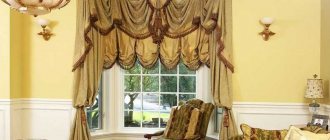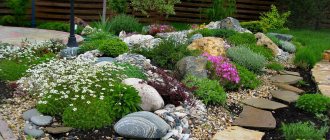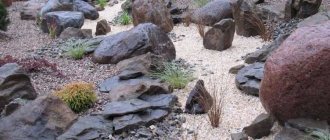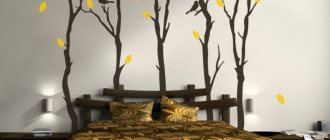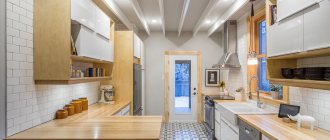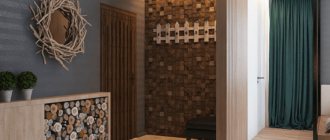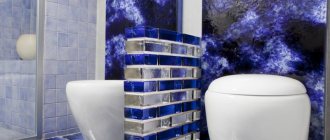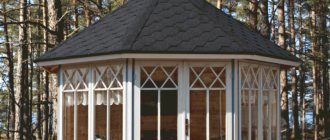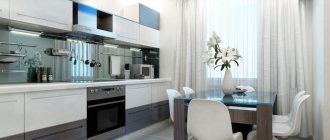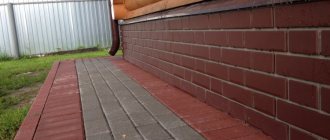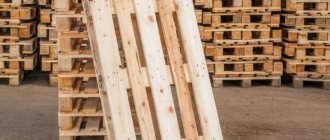Definition of decking
Decking is a modern building material used to create a patio and for landscaping the area near the pond. It is also quite often used as flooring for verandas and terraces.
Nowadays, decking refers to decking. Another name for decking is deck flooring. Indeed, in appearance this coating resembles a ship’s deck.
Wood after tremo-treatment
The base is heat-treated wood. This decking board is also called impregnated. Wood from more affordable price categories can be used as a material.
Insufficient “pureness” is compensated by steaming at temperatures up to 200 ºС. This treatment allows the decking board to be used as a thermal insulation coating.
The material is protected from the processes of decomposition and mold formation, while an absolutely smooth decking board can acquire a much more noble and impressive appearance due to the revealed texture of the wood.
The cost depends on the type of wood chosen, and can be either lower or significantly higher than the “classic” option. Increasingly, expensive wood species are being impregnated to improve their properties, extend their service life and emphasize the original texture.
From the array
This type of decking is considered the progenitor of building materials of this type, since it was this type that caused the growth in popularity of deck boards. Solid wood decking consists of ordinary boards made from solid pine, cedar, oak, and ash wood.
For those who like something exotic, a variation made from tropical trees is suitable. Flooring made from wood species growing in African, Asian and South American forests will look truly exclusive. The amazing fiber structure and long service life, up to 80 years, make this decking unique.
An excellent solution would be a massaranduba mahogany board. It is distinguished by its resistance to moisture and the ability to be used in situations with intense loads. The high level of rubber resins prevents the growth of mold fungi.
The kekatong (Australian walnut) finish is durable and stable. These properties are of great importance when designing outdoor areas. This type of wood is used in shipbuilding because it can withstand even sea water.
This type of material has the following advantages:
- moisture resistance;
- durability;
- strength;
- naturalness.
- aesthetics.
Solid wood boards are resistant to environmental influences and have a beautiful natural texture. Its only disadvantage is the need for systematic care using special compounds - waxes, impregnations, oils. The cost of such decking is not small.
Polymer decking
Terrace boards made of polymer material are an artificial material produced on the basis of resins with the addition of shavings or sawdust. The connecting element here is a polymer material, for example, polyethylene or polypropylene. The created materials are specially painted in one of the wood shades; this procedure is carried out directly during the formation of the mass. In general, such a board can be repainted yourself if this process becomes necessary.
Thanks to technical developments and carefully thought-out production, the material is completely free of disadvantages; it is in no way inferior to wood and completely eliminates its shortcomings.
Advantages:
- The board is resistant to temperature and temperature changes (withstands both -50 degrees and +65).
- Does not crack, break or be subject to other mechanical influences.
- There is no deformation when exposed to aggressive natural phenomena such as snow and hail.
- There is no fungus, mold or insects.
- Does not absorb other substances, easy to use and maintain.
- Fire safety.
- It does not fade, its external attractiveness remains for many years.
Despite a number of these advantages, advantages over wood and features that are not similar to wood, the material retains the warmth and comfort of natural wood. This material is also very pleasant to the touch; it is pleasant to walk on it barefoot, as it is not slippery at all. Polymer deck boards can be hollow or solid, but you will have to pay more for this option.
Made from thermowood
This type of decking is obtained using a special wood processing technology - high temperature steam treatment. As a result, the moisture contained in the wood evaporates, and it acquires high aesthetic and strength properties. The wood becomes moisture resistant - even direct interaction with water will not lead to its swelling and rotting.
Its resistance to exposure to sunlight also increases - thermal wood does not dry out and retains its shape. In addition, steam treatment gives it a bright, evenly distributed color and clear texture, which last for quite a long time.
Natural wood board
Solid wood is used to produce this type of decking board. At the same time, the best performance is achieved by wood varieties that are exotic for our region: teak, padauk, sequoia, iroko, jarra, thali, bilinga, garapia, okan, kumaru, massaranduba (this wood is also called ironwood), afromosia, merbau, ipe (combines strength and hardness with flexibility and elasticity).
Natural wood board
Growing in humid tropical climates, these trees develop natural resistance to sun and humidity, putrefactive bacteria and insect parasites.
The closest to them in properties, but much more affordable, is larch decking - when wet, this wood only becomes harder, and besides, it is “not to the taste” of rodents and wood-boring insects. But a pine decking board will require additional processing - impregnation with special resins and compounds that will improve its water-repellent properties. But even after this, it cannot compete in durability with other tree species.
Made from wood-polymer composite (WPC).
From the name you can judge the composition of the material used to create the coating parts. This board can withstand any climate. This is the most modern type of decking. Wood-polymer composite is a mixture of fine sawdust and special plastic additives. As a result of such a combination, a material is obtained that has all the advantages of natural wood with the complete absence of its disadvantages.
Plastic decking does not require special care. It feels wonderful in any weather, is not afraid of humidity and sun, and does not deform under load.
WPC decking does not burn and is not susceptible to fungi. Because of its advantages, polymer boards are widely used by landscape designers.
Unfortunately, it also has its downsides. First of all, this is the unnaturalness of the surface imitating wood. Also, in some cases, swelling, waves and chips may occur. This is typical for products produced by unscrupulous manufacturers.
- Rehau or Deceuninck - which is better?
- Which is better Rehau or Salamander?
Which plastic windows to choose: Rehau or Novotex?
To distinguish low-quality products, just look at the side cut - if air bubbles or foreign inclusions are visible on it, then you have low-quality decking.
The most significant drawback is considered to be the tendency of WPC boards to sag. Because of this, when manufacturing the site structure, the distance between the logs should be minimal. And you also need to provide a ventilation system to ensure air exchange of the space under the covering. Stagnation of air masses can lead to mold.
WPC boards can be sanded or unsanded. These two types have no external differences and have the same performance qualities.
What is decking
Technically, the coating is intended for improving terraces and other recreation areas. In practice, owners use the coating for baths and other premises.
The main advantages include:
- Moisture resistance – you don’t have to worry about the boards being exposed to rain or snow all year round.
- Stability – on the terrace you can hold concerts, dance and fill everything with heavy furniture.
- Wide choice of design and material.
- Aesthetics – capable of transforming any area.
- It accumulates heat well - standing on the cover will be comfortable even in the evening.
Due to the large number of positive reviews, this coating began to be used even for old and open summer kitchens and gazebos. The service life of even the most budget decking varies from 10 to 20 years.
Quite easy to install and maintain. Even an inexperienced site owner can install such a coating. The main thing is to study all the features and characteristics of the panels.
Boards may differ from each other not only in design and color, but also in the method of fastening. You can see it below in the decking photo.
Additional expenses when installing decking
If the installation of natural boards requires additional expenses in the form of self-tapping screws, then for laying terrace decking you need end parts. They perform both practical and aesthetic tasks.
F and L-shaped profiles, edging strips and lintel strips between the covering and the wall of the building are usually used as edging.
It is necessary to treat the flooring with special protective compounds during its installation, and then once every two years. The result will be a significant amount.
Speaking about support posts for the flooring, they can be made:
- Made of wood. The laying step is 60-100 cm (depending on the cross-section of the lag). The wood must be dry, humidity should not exceed 25% - otherwise deformations may occur. Treatment with protective special medications are required.
- Made from composite. The layout step is 0.3-0.4 m. Such logs are recommended to be used when installing flooring in difficult weather conditions, but under light loads. When installing between the surface of soil or concrete and the racks, it is imperative to install dense rubber pads.
- Made of aluminum. Such logs are characterized by minimal thermal expansion. We allow installation in increments of up to 1 m. Metal racks cost a lot, so they are used mainly in important areas that require a responsible approach.
What else should you pay attention to when choosing a board?
If you want to achieve a feeling of naturalness and closeness to nature, then a seamless decking board with a simple colorless coating is what you need. However, if a certain color predominates in the interior, the board must be “adjusted” to the surrounding environment.
This type of coating tolerates painting well, and structural elements can be painted after installation work is completed. Accordingly, the color of wood is not as important a parameter as its performance properties.
The profile of the decking board is selected so that the operation of the room or area is as comfortable as possible. The best option in most cases is a decking board with anti-slip corrugation. This anti-slip coating allows you to freely use smooth boards with maximum aesthetics, without worrying about someone slipping and getting injured.
It is not recommended to leave the board completely bare and rely on the rough and rough natural texture. Yes, the smell of wood may seem pleasant, but exposed wood tends to leave deep splinters in the skin.
The choice of manufacturer depends on what kind of wood you want as the main material. Thus, European companies specialize primarily in types of wood that seem exotic to our consumers. Sequoia and its South Asian relatives are prized for their natural adaptability to long-term, intense moisture.
But if you want the decking board to not require replacement for another 10-15 years (or even more), then you should choose products from a domestic manufacturer.
The unique properties of noble tree species eliminate the need for regular repairs: after laying ash or oak decking, all that remains is to periodically update the varnish layer.
The main danger when purchasing European decking is the possibility of running into a cheap Chinese counterfeit. To protect yourself from fraud, you need to independently check the company details.
If you do not have the opportunity to verify the reliability of the company, take a closer look at the range offered on the domestic market. You will most likely only benefit in price, and most importantly, the board will perform its functions flawlessly.
Disadvantages of decking
Each material has a number of its own disadvantages that can scare away the consumer. Therefore, many try to keep silent about them.
There are several relevant ones:
Complex production. It is almost impossible to make such a coating at home. The most expensive thing will be the purchase of high-quality wood, as well as material for impregnation.
Quite a high price. Not everyone can afford such coverage. Therefore, there are quite a lot of cheap fakes on the domestic market, which are passed off as the original.
However, the best option would be to buy liquid decking, which is made from wood tiles. It is better to refuse plastic.
Difficult installation. It is unlikely that you will be able to cope on your own. The slabs and boards are quite heavy, so it is better to call an acquaintance or friend for help.
Decking with boards is the best option for long terraces. Installation is much simpler, since there is no complex pattern. The main thing is to stock up on a large set of tools and gloves.
Despite its high cost, the coating needs to be updated every few years. This means that you will have to spend time and money on varnish and other impregnations.
Despite this, decking still remains one of the best options for ensuring a comfortable stay for household members.
Methods for laying decking boards
If you don’t want to trust the installation of floors to professionals, then you should understand the technological intricacies of laying the material on the floor. The preparatory process includes the purchase of the board itself, consumables, and tools. And only then, focusing on the installation area, choose a closed or open floor covering option.
Open installation method
If the laying is carried out in an open way, it is necessary to lay lag over the entire installation area. There are no particular difficulties; the structure must be securely fixed. The boards are laid with the required gap to prevent deformation of the flooring, but the hardware should be treated with anti-corrosion compounds.
Laying decking around the pool
Some tips from the professionals:
- Foundation installation work begins with fixed structures. This could be the wall of a house, a concrete base, etc.
- The first and last element must be secured with self-tapping screws entering at a slight angle - this is a kind of design limiter.
- Holes for fastening are first made in the boards.
- The extreme parts of the lamellas are located with a gap of at least 20 mm;
- Larch boards with a thickness of 2 cm or more, which are used to line a pool, terrace or other object, are laid with a gap of 0.8 cm; it is better to fix the equal width of the gaps with wedges.
- For large areas, it is recommended to lay the boards “in a staggered manner” with each next row offset by a third or half relative to the previous one. The junction between the elements should be on the lag.
But to strengthen the fastening, it is better to take profile clips made of galvanized metal or durable plastic with holes for self-tapping screws. Such hardware additionally ensures evenness of the gaps between the boards.
Important! Before laying, a preliminary calculation of the decking board is required. This can be done in the store - a professional manager will help you choose the amount of material, or yourself. You need indicators of the length and width of the site, then multiply the indicators to get the total area. Now it remains to find out the parameters of the board in order to calculate the costs of the material. But clarification may be required in the layout options: with the direct method of trimming the material, there is no material; with diagonal, herringbone, parquet installation, trimming is up to 20%. This must be taken into account when purchasing decking boards.
